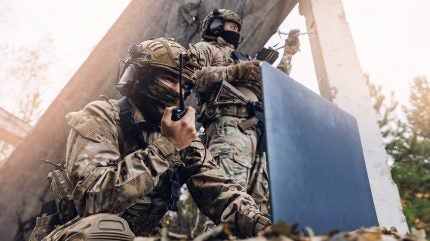
Traditional networks reliant on satellites or internet infrastructure, while effective, can be vulnerable to disruption. High-frequency (HF) radio communication, equipped with the capabilities of Isode’s Icon-5066 STANAG 5066 Server, offers an essential alternative, capable of sustaining secure, long-range communication even under adverse conditions. By modernising HF technology, the defence industry gains access to a dependable communication solution that operates independently of satellites and overcomes distance barriers.
Why STANAG 5066 is critical to modern defence communication
STANAG 5066 is a NATO standard designed specifically for HF radio networks, enabling various internet applications, such as messaging and command communications, to function seamlessly over radio frequencies. The protocol provides a stable and efficient means of transmitting IP-based data over HF networks. This innovation is vital for military and government organisations aiming to maintain operational security and connectivity without relying on internet-dependent or satellite-based infrastructure.
Isode’s Icon-5066 STANAG 5066 Server is at the forefront of HF communication advancements, optimising the STANAG 5066 protocol for secure, reliable transmissions. Icon-5066 enables IP applications, including secure messaging, email, and command software, to operate effectively over HF radio, transforming what was once a voice-only network into a versatile, data-enabled system. This transformation is pivotal in defence communications, allowing for real-time command and control capabilities across vast distances, without the risks associated with traditional internet or satellite connections.
HF radio’s resilience is rooted in its ability to transmit over extensive distances by bouncing signals off the ionosphere, eliminating the need for line-of-sight, ground-based infrastructure, or satellite dependency. This inherent capability makes it uniquely suited for secure communications in remote or isolated regions and for operations requiring Beyond Line of Sight (BLOS) connectivity. Icon-5066 integrates seamlessly within this infrastructure, providing enhanced reliability and performance that makes it ideal for defence applications across air, sea, and land operations.
Enhancing security in high-stakes environments with Icon-5066
Military organisations need a communications solution that can withstand hostile attempts to disrupt or intercept messages. Icon-5066’s robust configuration ensures encrypted, siloed data exchanges, making it highly resistant to interception and jamming. By relying on HF radio frequencies, Isode’s Icon-5066 creates an independent and decentralised communication channel that functions effectively, even in contested or cyber-compromised areas.
The high level of security provided by Icon-5066 is instrumental for military organisations that require uninterrupted and secure communications in volatile situations. Its support of both legacy and modern HF protocols ensures compatibility with existing defence infrastructure, further enhancing its value as a strategic asset. This adaptability is essential, allowing defence operators to leverage current HF radio investments while integrating advanced IP-based functionalities that meet the demands of modern military operations.
The strategic role of HF in BRASS communications for NATO operations
Broadcast and Ship to Shore (BRASS) is integral to NATO’s communication strategy, enabling secure data and voice transmissions between naval vessels and onshore command centres. Isode’s HF radio solutions, including Icon-5066, play a crucial role in these communications by supporting BLOS messaging and enabling IP-based transmissions over HF radio frequencies.
Isode’s BRASS solution uses Icon-5066 to facilitate essential protocols like ACP127, a well-established standard for HF messaging. This integration allows for the smooth operation of both legacy systems and modern IP applications, offering NATO a highly adaptable communications framework. In addition, BRASS helps NATO naval forces maintain operational readiness, even when satellite or internet-based communications are unavailable or compromised. This capability ensures that mission-critical information flows smoothly across command channels, bolstering NATO’s strategic resilience and response capabilities.
Why HF radio is more relevant than ever for defence operations
While satellite and internet-based communication systems are the backbone of many defence infrastructures, their vulnerability to disruption has raised concerns. Modernised HF radio technology, especially with advancements like those seen in Icon-5066, provides a necessary alternative. Icon-5066 transforms HF from a backup to a primary solution for resilient, Beyond Line of Sight communications. Unlike satellite systems, which can be susceptible to jamming and may fail under specific conditions, HF radio offers a level of independence that is uniquely suited to high-stakes defence scenarios.
As defence forces globally grapple with the need for reliable and secure communication, HF technology offers an answer that is both historically reliable and technologically modern. With its ability to support IP applications over HF radio, Icon-5066 ensures that even if primary communications are disrupted, military operators can maintain essential connectivity, preserving both mission success and personnel safety.
The resurgence in HF technology marks a strategic shift in defence communications, offering an alternative that is less vulnerable and more versatile than conventional networks. With its robust architecture, Icon-5066 meets today’s critical need for secure, resilient communication while supporting the modernisation of defence infrastructure.
To find out more, download the whitepaper below.



